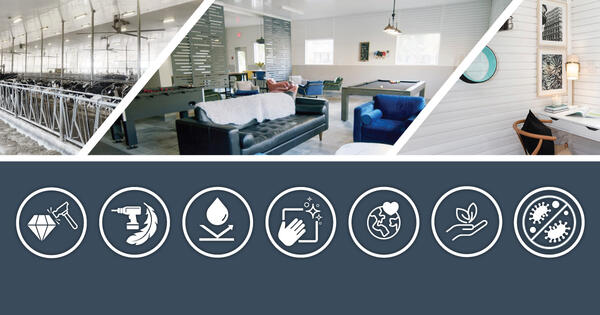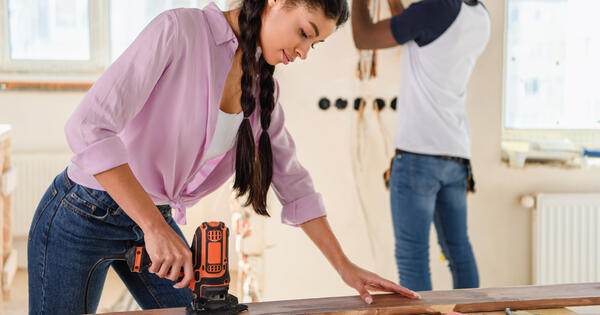Are you tired of the messy dog-washing routines that leave your bathroom flooded and your furry friend running for cover? It's time to take a leap into the world of at-home, indoor dog washing stations. In this blog post, we'll explore the advantages of setting up a DIY dog wash station at home, and we'll show you how to plan, design, build, and maintain a practical and stylish space that's perfect for your four-legged companion.
Benefits of Building Your Own Indoor Dog Washing Station
As a dog owner, you know that a regular bath is required to keep your dog happy and healthy. However, washing your dog in a bathtub designed for humans isn’t always easy. Plus, regular trips to the groomer can add up. By building your own indoor dog washing station, you’ll reap several benefits.
- Convenience: No more struggling with your pup in a cramped bathroom or wrestling them into the tub. A dedicated dog wash station offers a hassle-free and comfortable washing experience.
- Cost Savings: Say goodbye to expensive groomers' bills and enjoy significant long-term savings by investing in your dog's hygiene.
- Improved Pet Hygiene: A clean dog is a happy and healthy dog. Regular washing reduces the risk of skin problems and keeps your pet smelling fresh.



Best Wall Materials for Building Indoor Dog Washing Stations
Before building your dog wash, you’ll have to choose which of the three popular waterproof wall materials you’ll install: Ceramic or porcelain tiles, fiberglass reinforced panels (FRP), and polyvinyl chloride (PVC) panels. Each material has its own pros and cons, and it’s important for you to consider before making your decision.
Ceramic or Porcelain Tiles
Ceramic or porcelain tiles are popular choices for dog wash stations due to their durability and water-resistant properties.
Pros:
- Durability: Ceramic and porcelain tiles are known for their durability and resistance to wear and tear. They can withstand constant exposure to water and cleaning chemicals in a dog wash station.
- Aesthetics: Tiles come in various designs, colors, and textures, allowing for a visually appealing and customizable dog wash station, letting you match or complement existing interior design choices in your space.
- Hygienic: Tiles are easy to clean and sanitize, making them a hygienic choice for a dog wash area.
Cons:
- Installation Costs: The cost of purchasing and installing ceramic or porcelain tiles can be relatively high, and there’s a steep learning curve for DIYers who haven’t worked with them before.
- Slippery Surface: When wet, ceramic and porcelain tiles can become slippery, posing a potential hazard for you and your pup.
- Grout Maintenance: Grout lines between tiles can be challenging to keep clean and may require regular maintenance.
Fiberglass Reinforced Panels
FRP is a popular option for commercial grooming facilities, but the panels can also be used at home.
Pros:
- Water Resistance: FRP is inherently waterproof and won't degrade or warp due to moisture exposure.
- Easy to Clean: FRP surfaces are easy to clean and maintain, which is important in a dog wash facility.
- Cost-Effective: FRP is typically more affordable than ceramic or porcelain tiles and can be cost-effective for covering larger areas.
Cons:
- Aesthetics: FRP panels may not offer the same aesthetic appeal as ceramic or porcelain tiles, as they are generally plain and utilitarian in appearance.
- Durability: While highly durable, FRP panels may be more prone to scratching or damage than tiles.
- Limited Design Options: FRP panels come in limited design options compared to tiles.
PVC Wall Panels
PVC wall panels like Trusscore Wall&CeilingBoard are a long-lasting and low-maintenance option for your dog wash station that can also be used to finish the walls for the entire room.
Pros:
- Durability: Trusscore Wall&CeilingBoard is scratch, dent, and damage-resistant and designed to last a lifetime – it’s the perfect material for a dog wash, especially if your pup doesn’t enjoy being in the bath.
- Waterproof: Trusscore Wall&CeilingBoard panels are 100% moisture and water resistant, and install with a watertight seal, so you never have to worry about the growth of mold or mildew.
- Ease of Installation: Trusscore Wall&CeilingBoard panels require no special tools or skills to install, making it the perfect option for DIYers.
- Low Maintenance: The non-porous surface of PVC panels is low-maintenance and easy to clean – panels won’t be harmed by soap, water, or chemical cleaners.
Cons:
- Aesthetics: PVC panels may not offer all the same design options as tiles, and they can have a more minimalist appearance.
- Limited Customization: The range of designs and customization options for PVC panels may be limited – Trusscore Wall&CeilingBoard is only available in one finish and two colors (white and gray).
Step-by-Step Instructions for Building an Indoor Dog Washing Station using PVC Panels
If the perks of building a dog wash station with PVC panels appeal to you, here’s a step-by-step guide to building one with Trusscore Wall&CeilingBoard.
Design, Plan, and Prepare the Area
Before you start building your dog wash station, you have to plan your design and prepare the area.
- First, choose a location for your dog wash station. It should be near a water source and have a suitable floor for easy cleanup.
- Determine the size of the dog wash station. Consider the space available and the size of the dogs you'll be washing.
- Sketch a basic design and decide on the placement of the plumbing, drainage, and storage.
- Check local building codes and regulations to ensure compliance with any necessary permits.
- Clear the area and make sure it's level.
Frame Out Your Station
To create an enclosed dog wash station that extends from your existing wall, you’ll have to create a wood frame to install your PVC panels on top of.
- Choose a suitable type of wood for your frame. Pressure-treated lumber is a good option because it’s more resistant to moisture and decay.
- Measure and cut the wood into the desired lengths for the frame components using a saw or miter saw. Ensure that the frame is stable and square.
- Assemble the wooden frame using screws or nails to connect the pieces. Make sure it forms a sturdy and rectangular structure with the desired dimensions.
- To provide additional stability, consider adding diagonal braces in the corners. This can help prevent the frame from shifting or wobbling.
- Apply a waterproof sealant or paint to the wooden frame to protect it from moisture, humidity, and potential rot. This step is essential to ensure the frame's durability in an environment with water.
Prepare your Plumbing and Drainage Systems
A dog wash needs running water – and proper drainage – to keep your pups clean and to protect your space from water damage.
- Run PVC pipes for both hot and cold water from the main water supply to the station.
- Install a mixing valve for adjustable water temperature.
- Attach the showerhead and hose to the mixing valve. Ensure the plumbing is secure and leak-free.
- Create a slope in the flooring towards the drainage area and install a rubber or PVC drain in the lowest point.
- Connect the drain to the main sewer line or a dedicated dry well.
- Seal the edges around the drain with waterproof sealant to prevent leaks.
Install Trusscore Wall&CeilingBoard Panels
To install Trusscore Wall&CeilingBoard in a dog wash, we recommend following our special instructions for installing the panels in a human shower.
- Start by installing a waterproof membrane, such as a plastic vapor barrier on top of the substrate that will be behind the station’s walls.
- Next, install backer material, such as cement board on the wall that the Trusscore Wall&CeilingBoard panels will be fastened to.
- Follow the Trusscore Wall&CeilingBoard Installation Guide for complete steps on how to install panels to cover the station’s walls.
- We recommend installing the Trusscore Wall&CeilingBoard panels in a vertical orientation to allow for the best possible drainage. Start installing panels from the inside corners of the shower and work outwards to make installing the last panels easier.
- Before inserting any panels into the trim, run a small bead of silicone along the inside of the front-facing edge of the J Trim extending the entire length of the panel and along each panel end.
- When installing subsequent panels, run a small bead of silicone along the tongue of the panel and insert the tongue into the groove of the previous panel. Press the panels firmly together to ensure a proper connection and wipe away any excess silicone.
- After all panels have been installed, run a small bead of silicone along the seam of the front facing edge of the J Trim where it meets the panels, and along any corners.
When you’re done, be sure to run some water and put your work to the test to ensure there are no leaks and that your station will hold up to regular use. Afterwards, you’ll be ready to add a regular and convenient bath to your dog’s routine.







